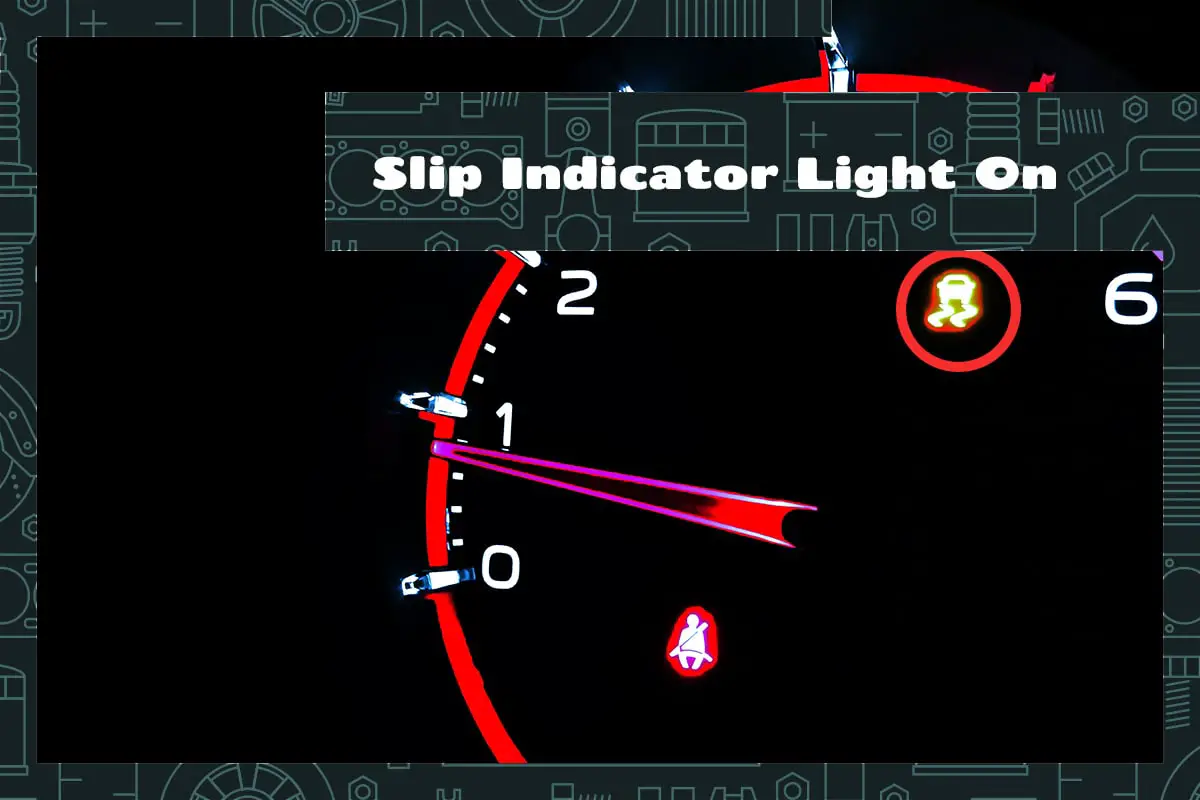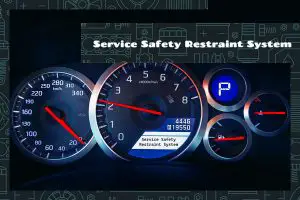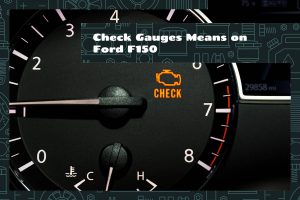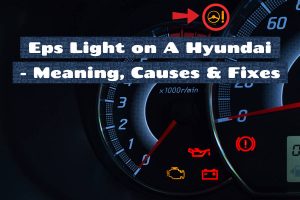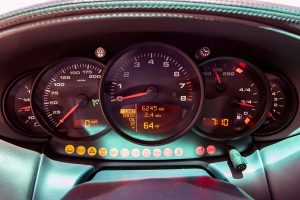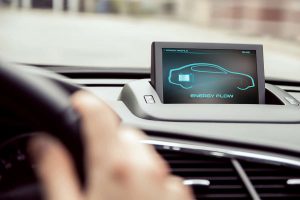Every driver, whether new or experienced, encounters various symbols and indicators on their car’s dashboard. These symbols inform the driver about the vehicle’s status. While some are self-explanatory, others may be a little more mysterious. For instance, what does it mean when the slip indicator light turns on?
The slip indicator is an icon resembling a car leaving wavy tracks. It represents the vehicle’s traction control system at work, signaling that the car is losing grip with the road and the system is trying to regain control.
This guide will discuss the slip indicator light in more detail, exploring its importance, functionalities, and how to respond when it activates.
What Is the Slip Indicator Light?

The slip indicator light communicates with the driver regarding the car’s traction on the road. It is tied to the vehicle’s Traction Control System (TCS) and becomes illuminated when the system detects a loss of traction.
The slip indicator is typically represented by an icon of a car leaving wavy tracks. This symbol indicates the vehicle’s traction control system is actively working. Traction control is designed to prevent wheels from spinning uncontrollably on slippery surfaces or during sudden accelerations.
The main purpose of the slip indicator light is to alert the driver when there’s potential wheel slip. When your car struggles to maintain grip on the road due to wet, icy, or uneven surfaces, the TCS springs into action:
- Preventing Wheel Spin: The TCS will reduce engine power or apply brake force to specific wheels to prevent them from spinning. This controlled action enhances the car’s stability and ensures it remains in the desired direction of travel.
- Optimizing Drive Force: In scenarios where you’re accelerating, especially on uneven terrains, the TCS redistributes drive power among the wheels to ensure optimal force. This action helps in reducing the chances of wheel spin.
- Enhancing Vehicle Stability: During cornering or making sharp turns, especially at high speeds, the TCS can adjust the engine’s power output and can brake individual wheels to make sure the car follows the curve safely.
Causes of the Slip Indicator Light Activation
Under normal driving conditions, the slip indicator light remains off. However, there are specific scenarios when it might light up:
External Road Conditions
One of the foremost reasons the slip indicator light might activate is due to the external conditions of the roads. This covers a range of scenarios:
- Wet Roads: After rain, roads can become slick with water, causing tires to lose their grip. This hydroplaning scenario reduces the tires’ ability to make contact with the road, prompting the TCS to intervene and the slip indicator to illuminate.
- Icy or Snowy Roads: Cold weather can bring its own set of challenges. Icy or snow-covered roads drastically reduce tire traction, making vehicles prone to skidding. Here, the slip indicator acts as a warning for reduced road grip.
- Loose Gravel or Sand: Sometimes, driving on roads covered with loose gravel or sand can make wheels slip. The inconsistencies in such road surfaces can disrupt the usual traction, triggering the light.
Driving Behavior and Responses
Your driving behavior directly influences various vehicle systems, and the slip indicator light is no exception:
- Rapid Acceleration: Pushing the accelerator pedal down too quickly can cause the tires to spin faster than they can grip, especially on surfaces that are not ideal. The sudden burst of speed might be more than the tires can handle, leading to the activation of the slip indicator light.
- Sharp Turns: Turning the steering wheel abruptly or taking a corner at high speeds can unsettle the vehicle’s stability. When the vehicle’s trajectory and the wheel’s motion don’t align, the TCS intervenes.
- Hard Braking: Suddenly pressing the brake pedal can lead to skidding, especially on slippery roads. While the Anti-lock Braking System (ABS) works to prevent the tires from locking up, the TCS ensures that the car maintains its direction, signaling through the slip indicator light.
Vehicle System Malfunctions
While external conditions and driving behaviors are often responsible for the activation of the slip indicator light, internal malfunctions can’t be ruled out:
- Faulty Wheel Speed Sensors: These sensors monitor each wheel’s speed. A malfunction can provide incorrect data to the TCS and cause the system to respond even when there’s no real threat of slipping.
- TCS System Errors: Just like any other system in your vehicle, the Traction Control System isn’t immune to errors or malfunctions. When it doesn’t function properly, the slip indicator light might come on as a result.
- Worn-out Tires: Tires with reduced tread depth or uneven wear patterns can compromise road grip. Such tires can easily lose traction, causing the light to activate more frequently.
Electrical or Software Glitches
Today’s cars are an intricate blend of mechanical and digital systems. Though rare, electrical or software issues can sometimes cause false activations:
- Software Bugs: The onboard computer manages various vehicle systems. Software glitches can sometimes lead to unwarranted activations of the slip indicator light.
- Electrical Faults: Loose connections, corroded wires, or other electrical issues can send wrong signals to the TCS, triggering the light.
When Should You Be Concerned?
The activation of the slip indicator light is primarily a protective measure to alert the driver that something is wrong. However, not every activation is cause for alarm. Here’s how you can differentiate a normal from a problematic warning light.
Normal Activations
- Starting on an Incline: If you’re initiating movement on a steep road, it’s common for the vehicle to adjust power to the wheels to prevent slipping. The light might briefly signal that the TCS is at work.
- Driving on Uneven Terrains: When on rough or off-road terrains, you may experience frequent light activations. It’s the TCS working overtime to maintain stability amidst the inconsistent ground.
- Momentary Slips: A brief activation is expected while navigating through a puddle, icy patch, or gravel. It’s the system’s way of telling you it’s handling the momentary slip.
Abnormal Activations
- Dry and Stable Conditions: If the slip indicator light remains active while driving on dry and stable roads, it could be indicative of a malfunction in the TCS or related systems.
- During Regular Acceleration: The light should not activate during standard accelerations. If it does, it might hint at issues with the vehicle’s sensors or the TCS itself.
- Unintended Vehicle Movements: If you feel the car is acting unpredictably, like sudden deceleration, and the slip indicator light comes on without apparent reason, it could be a sign of system errors.
Immediate Actions to Take
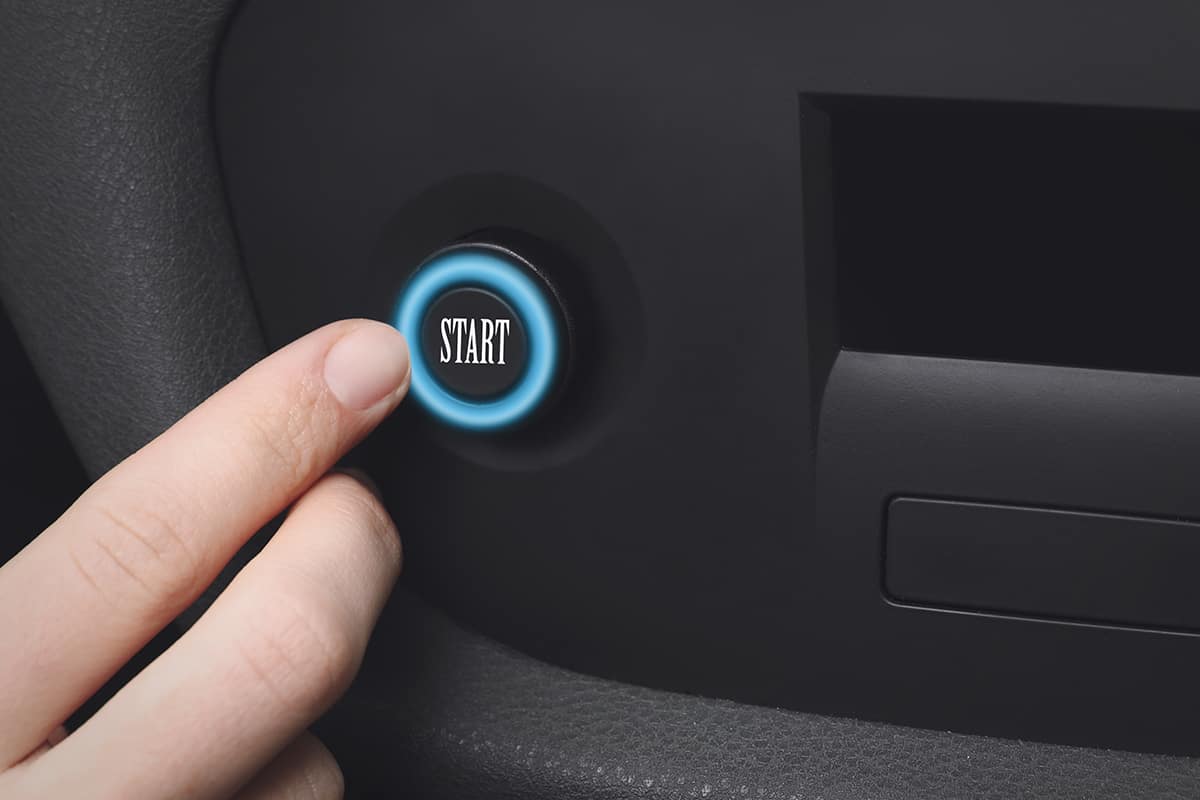
Like any dashboard warning light, you need to take the slip indicator light seriously when it turns on. Remain calm and do the following:
- Ease Off the Accelerator: Gradually release the accelerator to reduce speed. This allows the tires to regain traction and can often resolve minor slips.
- Avoid Sudden Movements: Refrain from making abrupt turns, sharp maneuvers, or immediate braking. These can further destabilize the vehicle.
- Inspect Tires: Begin by examining the tires. Check for visible damage, embedded objects, or significantly low pressure. Uneven wear or damage can contribute to reduced traction.
- Restart the Vehicle: Sometimes, simply turning off the engine and restarting it can reset the system and extinguish the light. This might resolve transient electronic glitches.
- Check for Other Warning Lights: Examine your dashboard. If other lights are active alongside the slip indicator, there may be something more serious going on under the hood of your car.
If the problem persists, you should carefully drive your car to the nearest mechanic for inspection. If your car is parked at home, have a mechanic visit you, so you don’t risk driving on public roads without proper traction.
